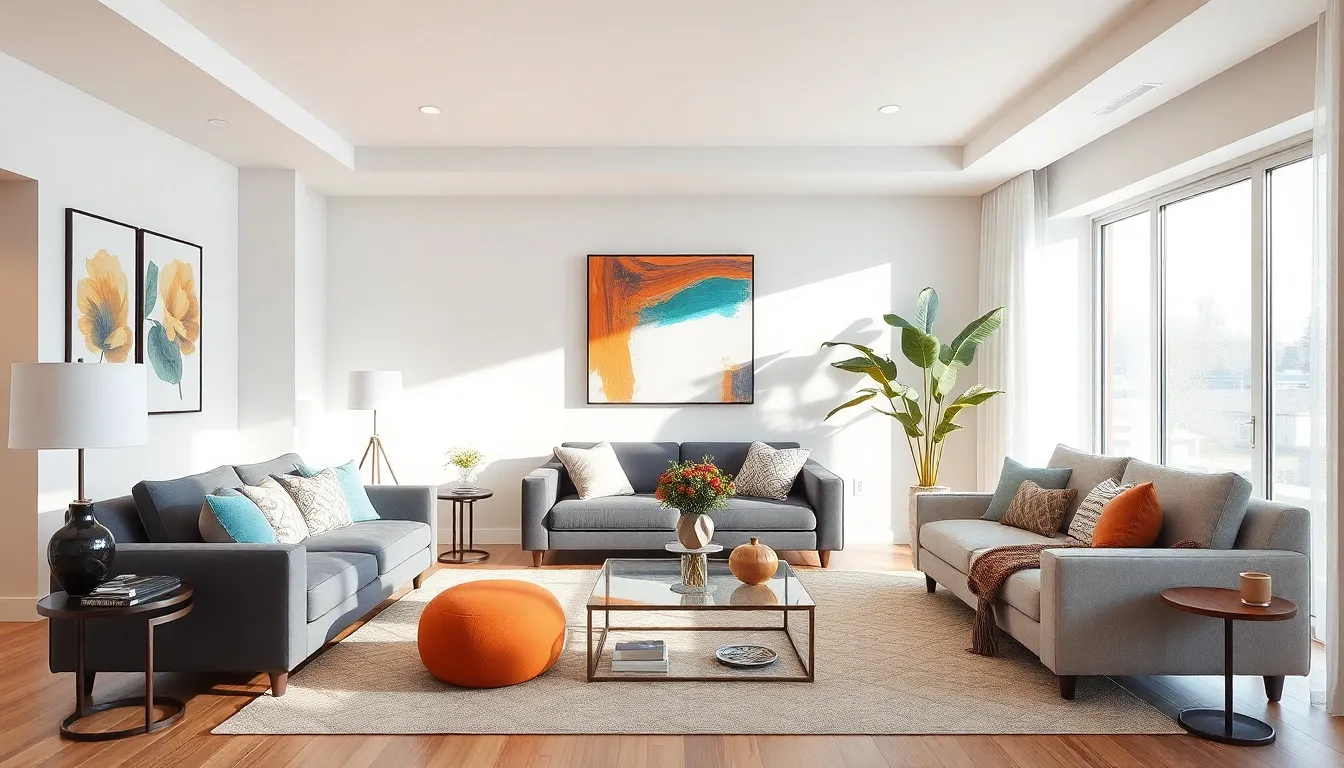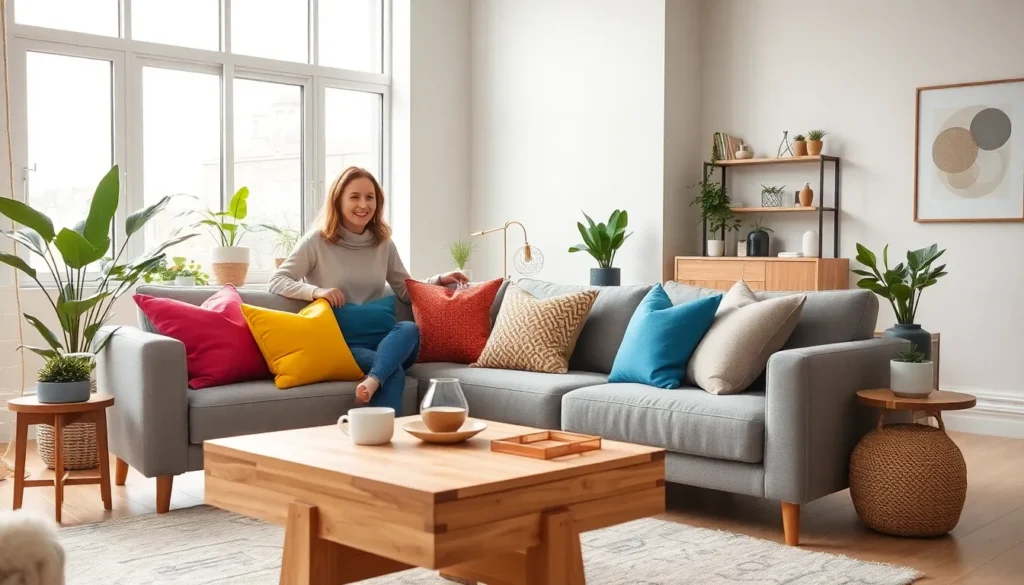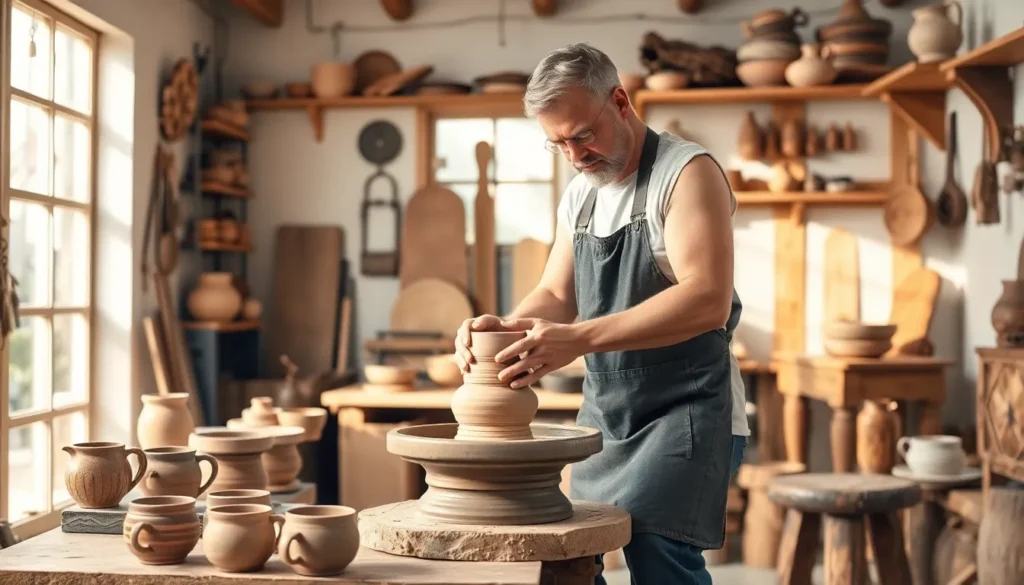Interior design isn’t just about picking pretty colors and fancy furniture; it’s a delightful dance of creativity and functionality. Imagine stepping into a space that feels like a warm hug, where every corner whispers, “You belong here.” That’s the magic of understanding core concepts in interior design.
Table of Contents
ToggleOverview of Concepts Interior Design
Interior design encompasses various concepts that guide the creation of aesthetically pleasing and functional spaces. These concepts include space planning, color theory, texture, and lighting design. Understanding space planning allows designers to optimize layouts while maintaining flow and functionality. Designers consider the size and placement of furniture to enhance movement and usability within the space.
Color theory plays a crucial role in setting the mood and tone of a room. Different colors evoke specific emotions and reactions. For instance, warm colors like red and orange stimulate energy, while cool colors like blue and green promote calmness. Designers often select color palettes that align with the intended vibe of the space.
Texture adds depth and interest to interior environments. It includes materials such as fabrics, wood, and metal. By incorporating various textures, designers create a tactile experience that complements the overall design. Mixing textures with different finishes can evoke a sophisticated, layered look.
Lighting design highlights the importance of illumination in setting ambiance and enhancing functionality. Natural light significantly enhances a room’s appearance, while artificial lighting helps define areas and activities. Layers of lighting, such as ambient, task, and accent lighting, work together to create a dynamic atmosphere.
Sustainable design principles have gained traction in recent years. Selecting eco-friendly materials, maximizing energy efficiency, and promoting wellness are priorities for modern designers. These practices not only benefit the environment but also contribute to healthier living spaces.
By integrating these concepts, designers craft spaces that reflect clients’ personalities and lifestyles. This approach fosters a sense of belonging while ensuring functionality and aesthetic appeal.
Key Principles of Interior Design

Successful interior design hinges on a few key principles. These principles shape the environment to enhance functionality and aesthetics.
Balance and Harmony
Balance creates visual stability in a space. Symmetrical balance involves mirroring elements on either side, while asymmetrical balance achieves equilibrium using different objects. Harmony blends colors, patterns, and textures, creating a cohesive look across the room. Scale plays a crucial role in maintaining balance; larger furniture pieces must complement smaller ones for unity. Designers often use a focal point, like artwork or furniture, to draw attention while achieving balance throughout the space. Space should feel inviting and comfortable, showcasing both personal style and the functionality of each area.
Color Theory and Its Impact
Color theory influences the mood and perception of a room. Each color evokes different emotions; for instance, blue instills calm, while yellow radiates energy. Designers consider color harmony, using complementary and analogous colors to create visual interest. The use of neutrals can balance bold hues, providing a calming backdrop. Light colors make spaces appear larger, while darker shades add coziness. Additionally, the right color choice can enhance an area’s purpose; for example, warm tones can promote a vibrant dining experience. Integrating color thoughtfully transforms spaces and reflects individual tastes, contributing significantly to interior design success.
Types of Interior Design Concepts
Different interior design concepts shape the atmosphere and functionality of spaces. Understanding these concepts helps create distinctive environments that cater to individual tastes and needs.
Contemporary Design
Contemporary design emphasizes clean lines and open spaces. Neutral color palettes combined with bold, statement pieces often stand out. Designers prioritize functionality through flexible layouts that adapt to changing lifestyles. Natural materials like wood and stone frequently enhance warmth and texture. Sustainable practices play a role, as many opt for eco-friendly furnishings and finishes.
Minimalist Design
Minimalist design embodies simplicity and functionality. This approach features uncluttered spaces with a focus on essential elements. Color schemes usually consist of monochromatic tones, often enhanced by strategic pops of color. Furniture items tend to be multipurpose, promoting efficiency. Natural light takes center stage, highlighting the beauty in less.
Eclectic Design
Eclectic design celebrates individuality through a mix of styles and influences. Designers often blend vintage and modern aesthetics to create unique atmospheres. Textures and patterns are combined harmoniously, encouraging creativity. Color variety plays a central role in this concept, as vibrant hues bring spaces to life. Personal artifacts and global inspirations frequently characterize eclectic interiors, making every room a reflection of personal experiences.
Importance of Functionality in Interior Spaces
Functionality plays a pivotal role in interior design, influencing both usability and aesthetic appeal. Each space should reflect its purpose while also promoting efficiency. Designers prioritize layouts that facilitate movement and accessibility, creating practical spaces for inhabitants.
In residential settings, functional design enhances daily living. Kitchens, for instance, require thoughtful planning to enable smooth meal preparation. Living rooms serve as gathering spots where comfort and accessibility create inviting atmospheres.
Commercial spaces also benefit from functional design principles. Offices need layouts that encourage productivity and collaboration among employees. Retail environments should facilitate customer flow to enhance shopping experiences.
Integrating storage solutions is essential for maintaining organization. Built-in shelves and multi-functional furniture optimize space while reducing clutter. Designers often utilize vertical space, ensuring that every corner maximizes utility.
Lighting contributes significantly to functionality. Natural light not only improves mood but also impacts how a space feels. Artificial lighting should complement natural sources, ensuring that every area remains well-lit for its intended use.
Incorporating technology can further enhance functionality. Smart home systems allow users to control lighting and temperature easily. This innovation supports sustainability, promoting energy efficiency while maintaining comfort.
Ultimately, functionality in interior spaces fosters a balance between livability and aesthetics. By focusing on practical needs, designers create environments that enrich the user experience and reflect individual lifestyles.
Exploring the multifaceted world of interior design reveals its profound impact on how individuals experience their environments. By harmonizing creativity with practicality designers can craft spaces that resonate with personal style while enhancing functionality. The emphasis on key principles such as space planning and color theory illustrates the importance of thoughtful design choices.
Moreover the integration of sustainable practices and technology not only modernizes spaces but also promotes healthier living. Ultimately interior design is about creating environments that reflect who people are and how they live. Embracing these concepts can transform any space into a place of comfort and inspiration.









